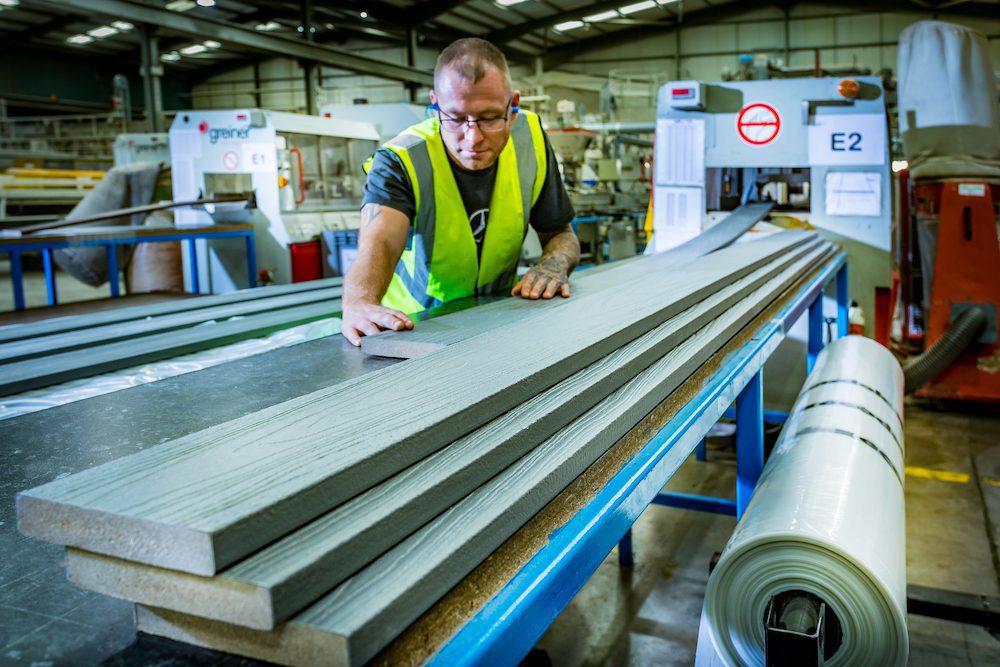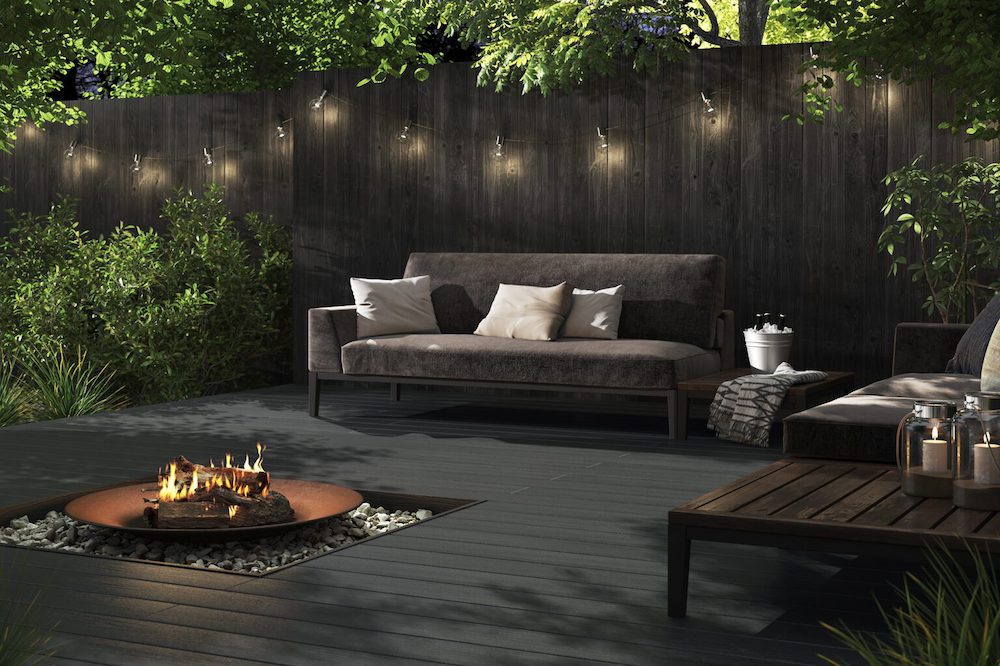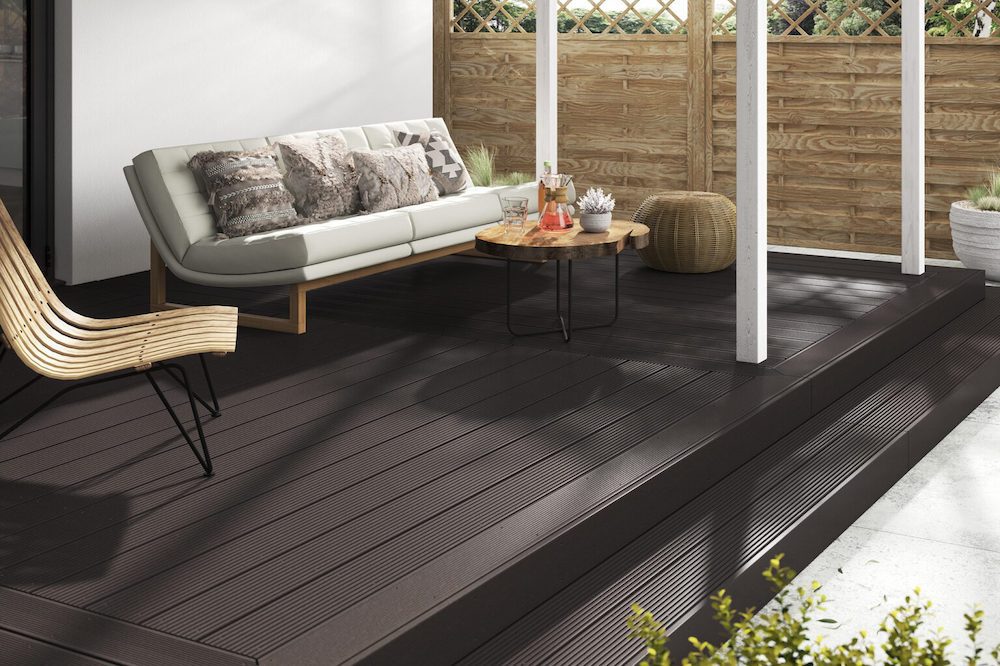When choosing the right decking for your project, you may be researching the different types of decking materials on the market. From timber and PVC, to bamboo, wood composite and aluminium decking – there are many options now available.
In this post we focus on wood composite decking – what wood composite is made from, its benefits and things to consider if you choose it for your next project.
What is wood composite decking made from?
Wood composite decking is made from a wood polymer composite (WPC) material. WPC material is a combination of predominantly wood fibres and recycled plastics. For example, our Signature and Heritage collections are made up of approximately 60% hardwood fibres – reclaimed beech from sawmills – and 35% high density polyethylene, otherwise known as recycled plastic milk bottles. The remaining ingredients include bonding agents and a high quality colour pigmentation.
These materials are heated together, formed into boards, and then cooled. The result is a high-quality, long-lasting composite board, which has all the beauty of timber but the practicalities of plastic.

What else can be manufactured from WPC?
It’s not just decking boards that can be made from wood polymer composite. The subframe on which the decking sits can also be constructed from the same composite material.
This means that, unlike a softwood frame which may rot within as little as five years of installation, your sub-structure will be just as strong and long lasting as your boards, and will not fail and compromise the integrity of your beautiful decked area.
Why choose wood composite decking?
There are many reasons why wood composite is a good choice for you next decking project:
1. It’s a sustainable choice
Our WPC decking is manufactured from up to 95% recycled and sustainably sourced materials. It’s also recyclable and we offer a waste buy-back service. And because we manufacture in the UK we can offer a custom length service, which helps to eliminate waste and reduce our environmental impact even further.
2. No need to waste time cleaning
Wood composite decking is virtually maintenance free, unlike timber which requires regular treatment to keep it looking it’s best and prevent it from rotting. In contrast, composite decking will only need the occasional clean, which means you can spend most of your time enjoying your outdoor space all year round.
3. Durable and safe
Wood composite decking is rot and split resistant. This means it will keep its appearance and integrity for a lot longer than traditional timber. That’s why composite decking often comes with a great product warranty, for example at Ecodek our warranties run from 10 to 25 years, depending on the board.
WPC decking is also slip resistant and splinter free, making it safe and comfortable underfoot in any weather.

Things to consider when choosing composite decking
It’s all in the preparation
It’s paramount that you take time to correctly prepare the ground ahead of laying your composite decking boards. As with any DIY project, an ill-prepared area will jeopardise the end result. If in doubt, please get in touch with our expert customer services team who’ll be happy to help.
To paint or not to paint?
The beauty of composite decking is that it’s available in many styles and finishes to suit your desired look. In our eyes, there is no need to paint your decking once fitted.
You can paint it if you wish – but due to the composite material our decking is made from, any paint will chip and wear easily, so we wouldn’t recommend doing so.
Looking after you composite decking
We know that accidents can happen. Moving furniture and plant pots, or dropping plates and glasses can cause scuffs and scratches to occur. But don’t worry – there are ways to get your decking back to its beautiful best!
For a light scuff, it’s best to leave it well alone. Once your composite boards have weathered slightly, most scuff marks will naturally fade or even disappear over time and will become unnoticeable.
If the scuff or scratch is deeper but is not completely through the top surface, a walnut can be used to help blend the marks until natural weathering has taken place. Only use a natural raw walnut – do not use extracted walnut oil or any other oil prescribed for scratch removal. If in doubt, contact our expert technical team who can talk you through it.
WPC decking – the future of decking
The advancement of technology and design means that wood composite decking is now one of the most sustainable, long-lasting options on the market, which makes it perfect for any application or landscaping project.
For further information about wood composite decking or the wider Ecodek range, visit www.ecodek.co.uk or call 01978 667 840.
